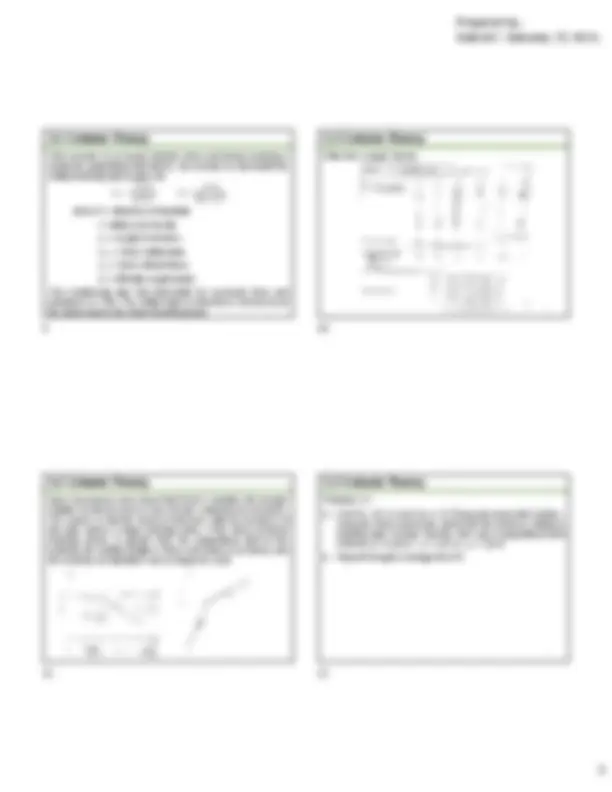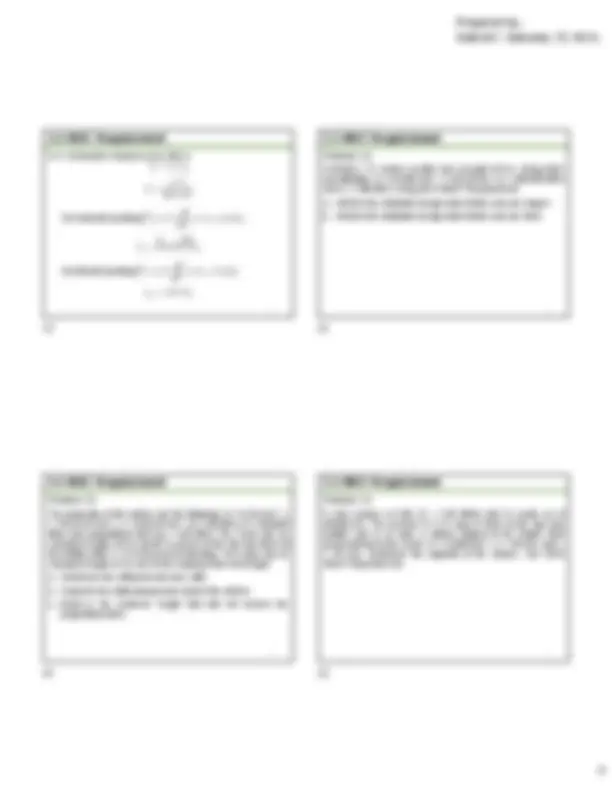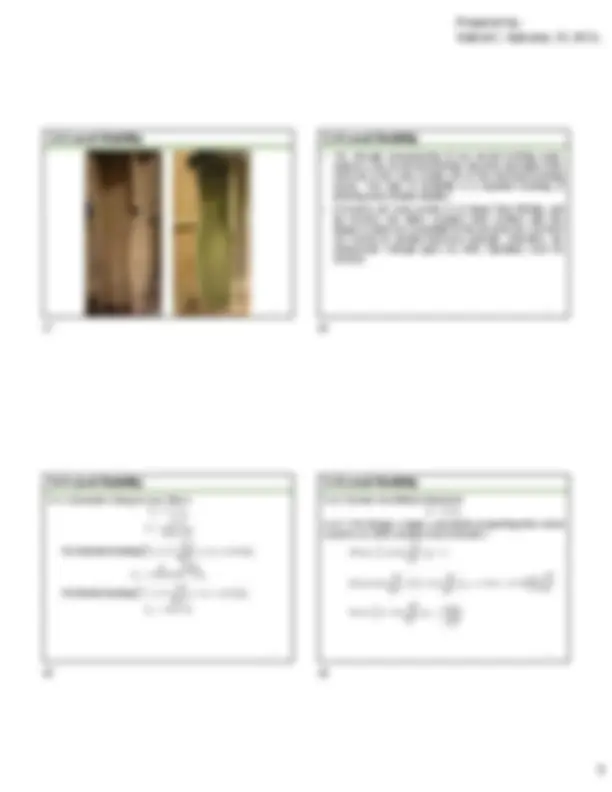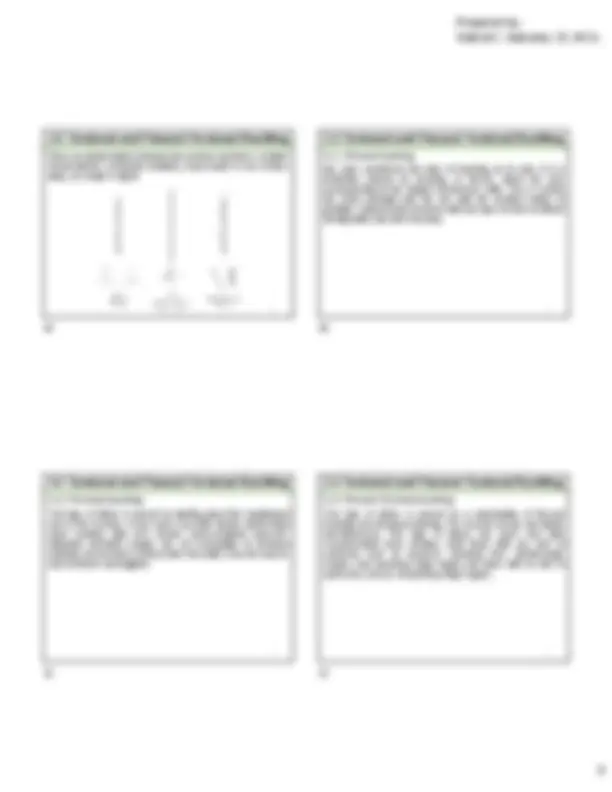






Study with the several resources on Docsity

Earn points by helping other students or get them with a premium plan


Prepare for your exams
Study with the several resources on Docsity

Earn points to download
Earn points by helping other students or get them with a premium plan
Community
Ask the community for help and clear up your study doubts
Discover the best universities in your country according to Docsity users
Free resources
Download our free guides on studying techniques, anxiety management strategies, and thesis advice from Docsity tutors
Compression member behavior Buckling and slenderness ratio (KL/r) Critical stress determination Preventing structural failure
Typology: Slides
1 / 8

This page cannot be seen from the preview
Don't miss anything!





Engr. Gabriel Gamana, M.Sc.
2 1.0 Introduction 2.0 Tension Members 3.0 Compression Members 4.0 Beams 5.0 Beam-Columns 6.0 Connections
3 3.1 Introduction 3.2 Column Theory 3.3 AISC Requirement 3.4 Local Stability 3.5 Torsional and Flexural-Torsional Buckling 3.6 Built-Up Members
4
5
6
7 Consider the long, slender compression member shown in figure a. If the axial load P is slowly applied, it will ultimately become large enough to cause the member to become unstable and assume the shape indicated by the dashed line. The member is said to have buckled, and the corresponding load is called the critical buckling load.
8
13 3.3.1 Allowable Compressive Stress 𝑃 = 𝐹𝐴 𝐹 =
For Inelastic buckling ≤ 4.71 (^) ிா 𝑜𝑟 𝐹 ≥ 0.44𝐹௬ 𝐹 = 0. ி ி (^) 𝐹௬ For Elastic buckling > 4.71 (^) ிா 𝑜𝑟 𝐹 < 0.44𝐹௬ 𝐹 = 0.877𝐹
14 Problem 3- A W460 x 177 column section has a length of 8 m. Using AISC specification; A = 22,600 mm^2 , r = 68.20 mm, Es = 200,000 MPa and Fy = 380 MPa. Using 2015 NSCP Requirements. a. What is the allowable design load if both ends are hinged. b. What is the allowable design load if both ends are fixed.
15 Problem 3- The properties of the column are the following; A = 8,129 mm^2 , Ix = 178.3x10^6 mm^4 , Iy = 18.8x10^6 mm^4 , fy = 345 MPa, E = 200, MPa and proportional limit (fs) = 320 MPa.^ The x-axis has an unbraced length of 8 m which is pinned at the top and fixed at the bottom with K = 0.70 to prevent sidesway. The y-axis has an unbraced length of 4 m due to the bracing at the mid-height. a. Determine the critical slenderness ratio b. Compute the initial compressive load of the column c. What is the minimum length that will not exceed the proportional limit
16 Problem 3- A steel column of A36 (Fy = 248 MPa) steel is made up of W360x122. The member is 9 m long is fixed at the top and bottom and is to have a lateral support at its middle third perpendicular to the y-axis. A = 15,500 mm^2 , rx = 153 mm and ry = 63 mm. Determine the capacity of the column. Use 2015 NSCP Requirements.
17
18
19 3.4.1 Allowable Compressive Stress 𝑃 = 𝐹𝐴 𝐹 =
For Inelastic buckling ≤ 4.71 (^) ொிா 𝑜𝑟 𝐹 ≥ 0.44𝑄𝐹௬ 𝐹 = 𝑄 0. ொி ி (^) 𝐹௬ For Elastic buckling > 4.71 (^) ொிா 𝑜𝑟 𝐹 < 0.44𝑄𝐹௬ 𝐹 = 0.877𝐹
20 3.4.2 Slender Unstiffened Elements 𝑄 = 𝑄௦𝑄 3.4.2.1 For flanges, angles, and plates projecting from rolled columns or other compression members: 𝑊ℎ𝑒𝑛; ௧ ≤ 0.56 (^) ிா ; 𝑄௦ = 1 𝑊ℎ𝑒𝑛 0.56 (^) ிா ≤ ௧ ≤ 1.03 (^) ிா ; 𝑄௦ = 1.415 − 0.74 ௧ ி ா 𝑊ℎ𝑒𝑛 ௧ ≥ 1.03 (^) ிா
ி ್^ మ
25 For flanges of square and rectangular slender-element sections of uniform thickness 𝑊ℎ𝑒𝑛 ௧ ≤ 1.40 ா 𝑏 = 1.92𝑡
26 Problem 3- Verify that a built-up, ASTM A572 grade 50, column with PL1in.×8in. flanges and a PL4in.×15in. web is sufficient to carry a dead load of 70 kips and live load of 210 kips in axial compression. The column length is 15 ft and the ends are pinned in both axes.
27 Problem 3- Determine if a built-up, ASTM A572 grade 50 column with PL3/ in.×102 in. flanges and a PL1/4 in.×74 in. web has sufficient available strength to carry a dead load of 40 kips and a live load of 120 kips in axial compression. The column unbraced length is 15 ft in both axes and the ends are pinned.
28 Problem 3- Two A36 L200 x 100 x 12 angles are used with a 10 mm gusset plate to create a top chord of truss. The short legs are back-to back making the long leg unstiffened elements. Determine the axial load capacity for a length of 2.13m. Properties of double angle: A = 6,942 mm^2 , rx = 26.82 mm, ry = 99.39 mm, Fy = 345 MPa.
29 When an axially loaded compression member becomes unstable overall (that is, not locally unstable), it can buckle in one of three ways, as shown in figure
30 3.5.1 Flexural buckling We have considered this type of buckling up to now. It is a deflection caused by bending, or flexure, about the axis corresponding to the largest slenderness ratio. This is usually the minor principal axis the one with the smallest radius of gyration. Compression members with any type of cross-sectional configuration can fail in this way.
31 3.5.2 Torsional buckling This type of failure is caused by twisting about the longitudinal axis of the member. It can occur only with doubly symmetrical cross sections with very slender cross-sectional elements. Standard hot-rolled shapes are not susceptible to torsional buckling, but members built up from thin plate elements may be and should be investigated.
32 3.5.3 Flexural-Torsional buckling This type of failure is caused by a combination of flexural buckling and torsional buckling. The member bends and twists simultaneously. This type of failure can occur only with unsymmetrical cross sections, both those with one axis of symmetry such as channels, structural tees, double-angle shapes, and equal-leg single angles and those with no axis of symmetry, such as unequal-leg single angles.